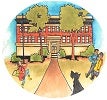School Tour
Welcome・ようこそ・Bienvenidos
We invite you to watch an interesting video that was created by our 5th grade students a long while ago as they consider what it means to be an international school.
McDonald International School in Pictures
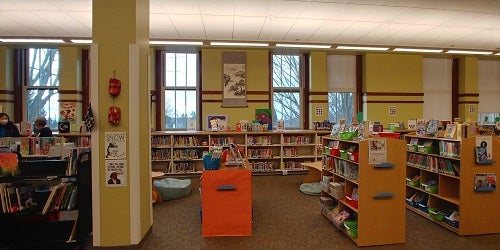
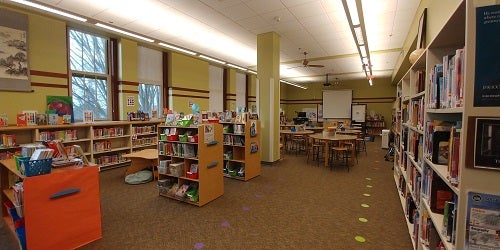
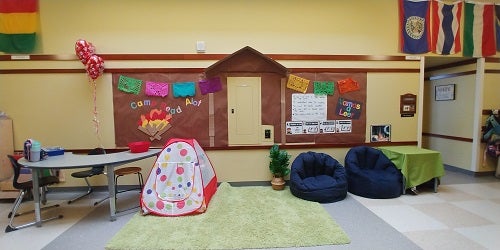
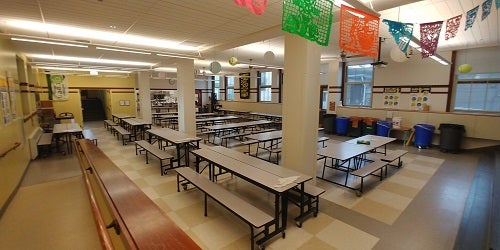
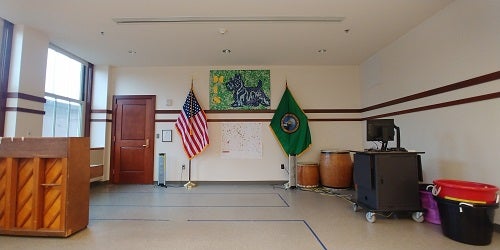
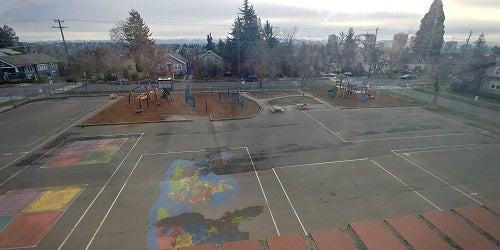
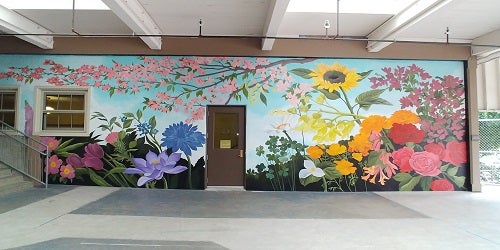

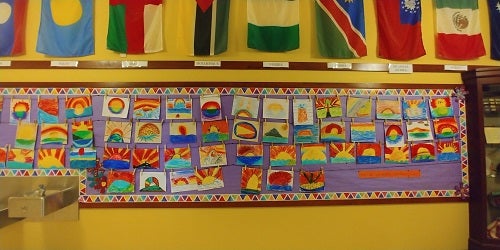
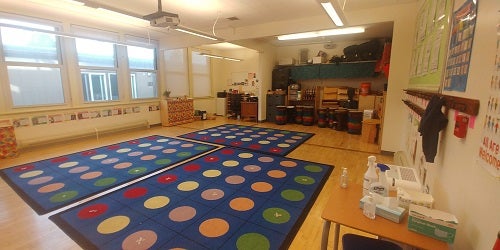
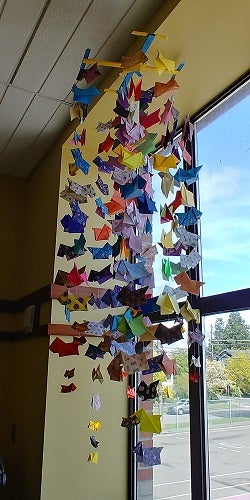
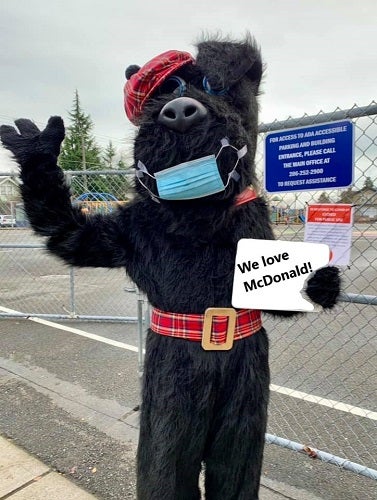

Frequently Asked Questions (FAQ)
The following questions and answers are often asked during school tours.
The average school day for Kindergartners includes lots of fun:
- School starts at 7:55 a.m.
- Instructional Block 8 – 8:45 a.m. (might be Art, Music, or PE)
- 9 – 9:15 a.m. Recess
- 9:15 – 10:10 a.m. Instructional Block
- 10:10 – 10:30 a.m. Recess
- 10:30 – 10:50 a.m. Lunch
- 10:50 – 11:50 a.m. Instructional Block
- 11:50 – 1:05 p.m. Instructional Block
- 1:05 – 1:20 p.m. Recess
- 1:20 – 2:25 p.m. Instructional Block
- 2:25 p.m. Dismissal
Do Kindergartners stay in the same classroom and the teachers rotate in or do they move around the school throughout the day?
Every student in the school is in one classroom in the morning and shifts to another classroom in the afternoon.
Can you talk about how hard it is for students at first if they do not have the target language at all?
The first few months of Kindergarten are hard for most children as they navigate how to interact in a new school, with new people, and new routines. Adding a language component does make it a little bit harder for children. But our teachers want children to succeed and feel happy and successful! They use many tools to help students – visual aids, music, lively conversation, and extra help when needed. We do not expect non-native speakers to become fluent in the first few years at McDonald! Fluency takes time.
Does McDonald support students who need extra support academically?
Yes. McDonald offers Multi-Language Learner, math, and reading support.
Do you find that the language program fulfills that need, or are additional programs/enrichment necessary?
Yes, children learn the subjects in the target language just as they would in English. If extra assistance is needed, students have access to extra help with an additional staff member’s support.
Do K/1 students have the same teacher for two years? Or do they switch each year?
Typically, there are different teachers each year, but on occasion, if there is a reduced number of K classes, students may have the same teachers for two years in a row.
Do you offer extra reading/academic supports in the target language as well as English?
Yes
After learning science and math in Japanese, do the kids also have opportunities to learn both subjects in English? Do parents have to teach them in English later?
Teachers, especially in the early grades, do use some English to help ensure children understand concepts when visual aids are not enough in the target language. Parents are not expected to teach these subjects to their children in English later.
Do you have full time Multi-language Learner teacher?
We have one full-time MLL teacher and 3 MLL instructional assistants.
What is the student-to-teacher ratio in the Kindergarten classrooms?
26:1
I noticed a 3D printer behind one of the teachers during intros – what type of STEM learning opportunities do students have at McDonald?
McDonald PTA has offered a STEM night for our students in the past, but STEM is not an official focus at McDonald.
How often do kids get outside to play and enjoy fresh air? Number of recesses?
Kids get outside at least three times a day for a morning recess, a lunch recess, and an afternoon recess. PE may also bring the kids outside.
How often are PE/Art and Music?
At least one hour per subject per week.
Our child is currently enrolled in SPS pre-K with an IEP. Can you spend a moment talking about Special Ed at McDonald? Does the bilingual environment tend to make things harder for kids who need special education? Is there someone we could contact if we have more questions?
We have two Special Education teachers at McDonald dedicated to resource room support as well as a Speech Language Pathologist, Occupational Therapist, Physical Therapist, School Psychologist, School Counselor and 504 Coordinator. The bilingual environment does not impede upon the assistance children need and receive at our school. Please contact out administrative secretary at arpoffenbarg@seattleschools.org if you have more questions.
Do the subjects taught in the target language change in future grades?
No
How many Kindergarten classes are there at McDonald?
There are 2 Spanish Kindergarten classes and 1 Japanese Kindergarten class.
How challenging is it for students who only speak English to become acclimated?
Our experienced Kindergarten teachers work hard to help their students feel welcome and become comfortable and “acclimated” within a few weeks using music, games, and stories.
Are the older grades also 26 students per class?
We have 26 students per class through third grade. There are 28 seats available for 4th and 5th grade classrooms.
What level of Japanese language skills would you expect from the students entering the school? Same question for Spanish?
Unless your child is a native speaker, there is no expectation for them to have any experience in the target language at all.
How much does prior language ability factor into likelihood of acceptance? For example, are native bilingual speakers more likely to be accepted?
Native bilingual speakers are important for our program. The district sets aside 20% of our seats for native speakers. That equals 5 seats in each Kindergarten class and those seats are not part of the seat consideration for the other 21 seats. Siblings of existing McDonald students have priority for the available 21 seats, next comes students who live in the Geo Zone, and the remaining seats go to children outside of the Geo Zone.
Will you address the admissions process for Native speakers?
Native speakers will fill out the Option Form requesting McDonald International as their number one choice, indicating that they are native speakers (checking the box). The district sets aside 20% of Kinder seats for native speakers. The district will reach out to native speaker families to offer them a seat at McDonald and we will schedule language assessments with families, which will happen over Microsoft Teams in the spring.
Can you please explain how the native language set aside works, are those assigned after the tiebreakers including lottery?
Yes. Siblings and geo zone placements are made first. Native speakers become part of the lottery list and are pulled from the list in the order they were randomized in and contacted for language assessment until the seats are filled.
Can you share how native speakers are currently assessed?
Native speakers will be assessed in the spring by our language immersion teachers.
Is there a difference between native speakers and fluency, or are they the same?
Yes, there is a difference between native speakers and fluency. For enrollment purposes, native speakers refers to the families who speak the target language at home every day. It also refers to the cultural background of the family. Language fluency is helpful certainly, but is not a substitute for families actively speaking the language at home.
For these students, the native language is a natural and normal part of everyday life. We want to view these seats through an equity lens. The spots are not meant for students from an immersion preschool, or who have had a second language nanny.
I heard the 20 percent native spots are often filled by siblings and geo zone students, is that correct? Or do they not count toward the 20 percent?
We encourage families to only apply for a native seat if they do not have a sibling student already in the school. Students with siblings at the school have priority over the set-aside native speaker seats. The 20% native speaker seats are separate from the other tie-breaker categories.
When are native speakers assessed?
Native speaker assessment will take place in late April and early May. You will be notified by the school if your student is eligible for this assessment and possible placement at McDonald.
Can you let us know the percentage of Geo zone students end up getting accepted in a typical year?
This number depends on the number of siblings entering the school. Some years are higher than others. Historical choice data can be found on the SPS website.
We are interested in starting our student in first grade in the Spanish immersion program. Can you speak to the enrollment process for first grade, including how many spaces you expect to be open and how spots will be allocated among native and non-native speakers?
First grade families need to fill out the Option School form on the SPS website just as Kindergarten families do during Option School enrollment during the month of February. These seats are filled as openings arise from a waiting list. Special care is taken to place native speakers into open heritage seats. We have no way to predict how many open First grade seats there will be from year to year. All waitlists are dissolved on August 31.
What are the before/after school care options? (If any?)
There are no before-school programs at McDonald International.
- KidsCo offers after-school care at McDonald and summer programs. They are a separate business and have their own waitlists.
- If you are offered placement at McDonald, we recommend that you contact KidsCo immediately if you think you may need after-school care.
- Other providers for after-school care programs are Boys & Girls Club in Wallingford and Little Explorers in Greenlake.
How difficult is it to get into after-school care programs?
It can be difficult so if you are accepted to McDonald, we recommend you contact KidsCo right away to get on their waitlist.
Bus service is not available to children outside the Geo zone. Bus service is available to some after-school programs, such as Wallingford Boys & Girls Club.
Please contact the SPS Transportation department for more information.
There is no difference between the two school programs.
You can find current demographics and other information about our school on the Washington Office of Superintendent of Public Instruction website
Current Percentages
- Asian/Pacific Islander 22.73%
- Hispanic/Latino 11.36%
- White 65.91%
